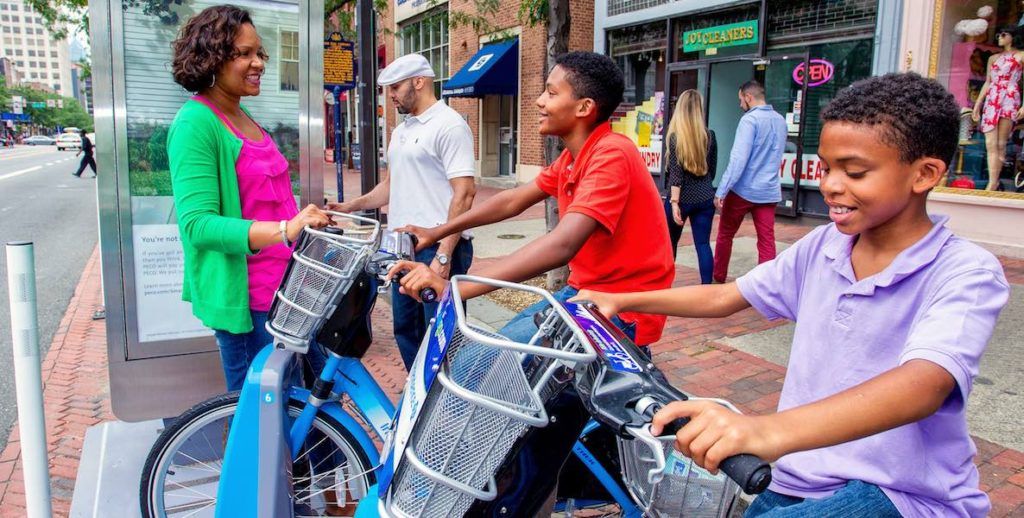Every month, as utility bills arrive in my inbox, there’s one that stands out, for reasons that have almost nothing to do with payment. It’s PECO’s Smart Energy Report, comparing my family’s energy usage to that of my neighbors.
Now, I have no idea which neighbors PECO is considering—the two-person family a few doors down? The apartment building across the street?—or what it really means if I were to dig down into the numbers. What I do know is that every month, when I open the email I am slightly dismayed and more than a little jealous: Though we get a smiley face for being “good,” 62 percent of my neighbors are apparently more energy “efficient” than we are.
And so starts anew the flurry of switching off lights, and nagging at children to do the same. My bills don’t noticeably change as a result. But I have seen—and enjoyed—a slight rise in how I compare to neighbors. And that spurs me on to be even better about my electric use.
This is no accident. The folks at PECO have clearly employed the use of behavioral science to help them help me bring down the cost of my electricity.
That, essentially, is the idea behind a new initiative launched last month by the City of Philadelphia that pairs officials from several city departments with researchers from area universities to use behavioral science, human-centered design and trauma-informed principles to inform the way they interact with the city’s customers. The goal of GovLabPHL is to revamp an essential, but often overlooked, part of city government—customer service. (See The Citizen’s Mystery Shopper series for a look at how some city departments rate on service now.)
“We have policies in place to help people,” says Anjali Chainani, Mayor Kenney’s Director of Policy. “But we don’t hit our targets in utilization. That means people aren’t getting the help they could be getting.”
The city started down this path in September 2014, when under Mayor Nutter Philadelphia received one of three inaugural grants from City Accelerator—a program of the Citi Foundation and Living Cities—to promote innovation in local government. The city’s goal—to reduce poverty through innovative practices—coalesced around the Senior Citizen Water Discount, a cost-saving measure out of the Water Department because the Department of Revenue realized that 6,000 residents who had enrolled in a Senior Citizen Tax Freeze had not applied for the water discount, even though the requirements were the same. They wanted to know why.
Working with researchers from Columbia University, they discovered that the barrier was the application itself: It was on paper only; the print was small and hard to read; and it was unattractive. (All of that has since been fixed.) The researchers also ran two different controlled experiments on varied ways to communicate with customers—phone calls, postcards, handwritten envelopes that are bigger, envelopes that are green. What they found was that the best and most efficient way to ensure seniors applied for the program was by calling them on the phone, and following up quickly with an application in a green envelope. These simple changes increased the rate of participation in the program by 15 percent.
On the face of it, this doesn’t seem particularly radical; these are the sorts of practices commonly used by commercial companies, vying for your credit card business, for example. But think of it in the context of the giant bureaucracy that is city government. City workers are so mired in the day to day scramble that they don’t have time—or foresight—to rethink how they communicate with their customers in order to make that scramble more efficient. They are not necessarily versed in social science, or in the latest speak about how organizations can change, like the en vogue notion of design thinking. Bureaucracies are not, by their nature, forward-thinking entities.
“We have all these super smart people who study this all the time, sitting a 10 minute drive from City Hall,” Bhanot says. “We want to be a clearinghouse for them to interact with the city. This creates something for academics to give back, that also gives them cool academic projects.”
But they need to be. That’s what Mayor Nutter realized when he put an emphasis on data and tech initiatives that earned him a national reputation as an innovator. Under Mayor Kenney, some in the tech community have worried that those efforts are being curtailed. Now he’s making his mark with programs like GovLabPHL, formally launched last month to continue and expand on the City Accelerator work.
So far, six departments have started work with the Philadelphia Behavioral Science Initiative, which pairs volunteer researchers from Penn, Swarthmore, Temple, Princeton and Drexel with city officials to essentially help answer a series of simple but important questions: How do you communicate with residents? How does that make them behave? How can you get more of them to take advantage of more cost-saving and healthy measures?
“Marketers have done this for a long time, to get you to buy a certain pair of jeans, or orange juice,” explains Syon Bhanot, a behavioral and public economist at Swarthmore College, who is working on several different city projects. “We try to think about, Why doesn’t the city do it as a way to save money, and save people money? I think of it as marketing for good.”
Most people outside of marketing and academics probably first heard of behavioral science in 2002, when psychologist Daniel Kahneman won the Nobel Prize in Economics for his work in this area. In 2009, Richard Thaler and Cass Sunstein published the New York Times bestseller Nudge: Improving Decisions about Health, Wealth, and Happiness, a non-academic explainer for how and why we make decisions. “The book made policymakers take notice,” Bhanot says.
Sunstein, a Harvard Law professor, went on to work in Obama’s White House as the “nudger-in-chief,” bringing the concepts of behavioral science to the Office of Information and Regulatory Affairs. That was the first, big application of the academic field into American public policy. Thaler, a University of Chicago economist, meanwhile, became an advisor to the Behavioural Insights Team in the United Kingdom, considered the first governmental institution dedicated to applying behavioral science to public policy. (BIT is now a public-private partnership, with an office in the United States.)
The effort to incorporate behavioral science into city government has taken off in the wake of those two projects in the last four or five years, as the field has become more “cool and known,” as Bhanot puts it. “The ideas aren’t new, but the applications are,” he says. “A lot of research that’s been done so far involves bringing undergrad students into the lab, describing a strange behavioral quirk and writing about it. But if the concepts don’t work in the real world, who cares if they work on undergrads?”
Six departments have started work with the Philadelphia Behavioral Science Initiative to essentially help answer a series of simple but important questions: How do you communicate with residents? How does that make them behave? How can you get more of them to take advantage of more cost-saving and healthy measures?
Bhanot and three other academics from Swarthmore, Penn and Princeton formed the Philadelphia Behavioral Science Initiative to apply what researchers know—and want to know—about real people’s behaviors in real world situations. The relationship with City Hall happened a bit organically—PBSI was looking for a way to work with city government at the same time as the city had started looking for ways to increase its use of behavioral science techniques.
Several researchers have already begun projects with city departments, and Bhanot says they are continuously recruiting more experts from universities around the region, as they see a need. The work is a win-win for everyone: The city gets to take advantage of brilliant academic minds; academics get problems and populations to study, resulting in research they can publish.
“We have all these super smart people who study this all the time, sitting a 10 minute drive from City Hall,” Bhanot says. “We want to be a clearinghouse for them to interact with the city. It’s way more efficient for the city to use human capital that’s already here. This creates something for academics to give back, that also gives them cool academic projects.”
“This can save the city money, time and resources,” Chainani says. “Applying these kinds of frameworks can have a larger impact too—residents feeling engaged, understanding what they can get and do, in order to solve what they need.”
Or, as Bhanot puts it: “We want to see how we can really help people improve their quality of life.”


